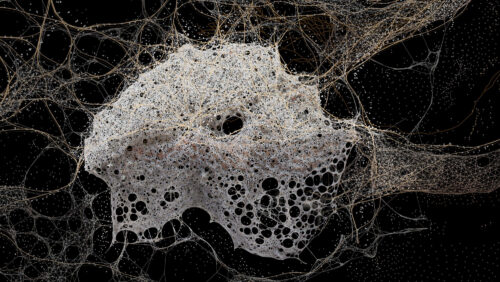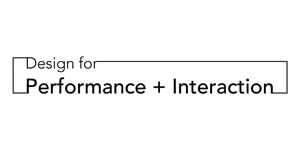Sensing Bodies in Space investigates the interplay between sensory perception and space, challenging traditional notions of touch, sight, sound, and proprioception. This exhibition creates unique experiences that prompt reflection on how our bodies shape our view of reality and the limits of our sensory experiences. It challenges us to reconsider these experiences and appreciate the unseen forces that influence our perception of the world.
Visitors are invited to explore the relationship between sensory experience and space through a series of interactive installations. The exhibition examines how our bodies engage with and transform the often technologically mediated spaces we inhabit — the senses as mediators of reality.
The projects engage different senses – touch, sight, sound, proprioception (the sense of body position) – to create unique environments where physical and virtual spatial boundaries and sensory inputs blend and diverge. The artworks challenge traditional notions of perception, encouraging visitors to become active participants in the creation of their sensory experiences through digitally-mediated processes.
Sensing Bodies in Space also investigates the social dimensions of spatial experiences. Collaborative installations provide opportunities for visitors to interact with one another, exploring how collective sensory experiences can alter individual perceptions and contribute to a shared understanding of space.
The exhibition aims to provoke a deeper understanding of how the sensing body processes and adapts to the environments — physical and digital — that we move through. This exhibition is not just a showcase but an invitation to reflect on the fundamental ways in which our bodies comprehend and influence the world around us. It challenges us to reconsider the boundaries of our sensory experiences and to appreciate the unseen forces that shape our perception of reality.
-

Sound space and perception
Paul Bavister (GB), Anindia Pradita (ID), Andrew Yu (CA), Sakshi Galkate (IN), Kimverlyn Lim ( SG), Demi Gao (CN), Nicole Xu (CN)
This installation deals with ideas of cross-modal perception, and how the senses work together to define how we unconsciously perceive our environment. Each sense informs the other, leading to heightened or softened perception of environmental phenomena.
-

Tactile Narratives
Nikoletta Karastathi (GR), Zimeng Tan (CN), Winnie Ngai Lan Tam (US), Hayze Wan (MY), Ruoru Wang (CN), Rabih Arasoghli (LB), Swaraj Dhuri (IN)
Skin acts as a dynamic medium between bodies and their surroundings, providing diverse stories and perspectives. Through a sensory metamorphosis, Tactile Narratives transcends boundaries, unveiling a multitude of narratives through textiles that serve as storytelling interfaces and tactile bridges.
-
Virtuality in Motion
Alexander Whitley (GB), Zijun Wan (CN), Natsume Ono (JP, US), Leonard Li (CN), Abigail Alvarez Aguilar (GB), Heta Shah (IN)
Virtuality in Motion explores the translation of human motion into virtual forms. Featuring a collection of bespoke avatar designs and a generative system of choreographic patterning, the installation allows participants to explore how their movement both influences and is informed by the unique spatial, kinetic and qualitative characteristics of the moving forms they are presented…

Design for Performance and Interaction. The Bartlett School of Architecture, University College London (GB)
What happens when we design in four dimensions instead of three? This radical, multidisciplinary Master’s degree teaches students to understand and design performances and interactive experiences. Design for Performance and Interaction welcomes students from an array of artistic and technical backgrounds to work with interactive technologies to consider objects, space, people and systems as potential performers.
Credits
Design for Performance and Interaction. The Bartlett School of Architecture, University College London


